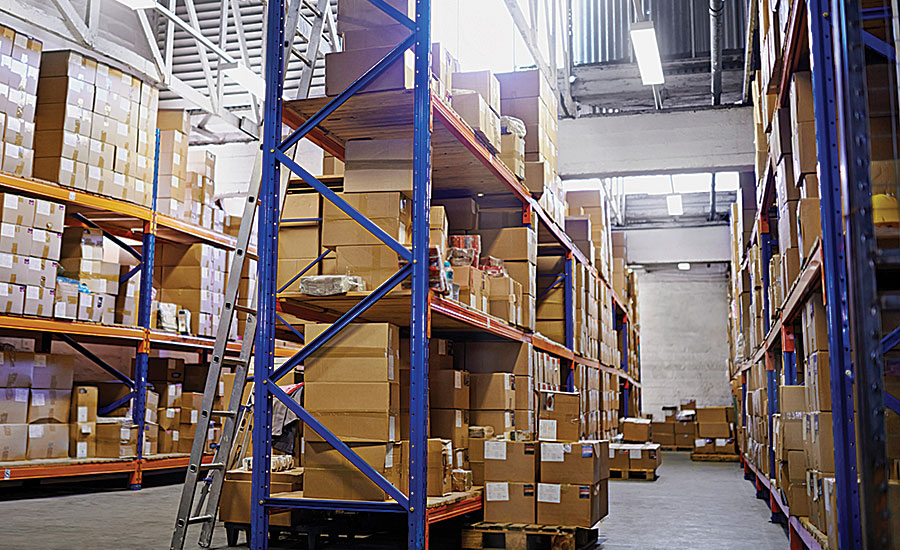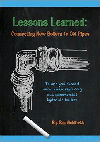For modern distributors, technology can supportmany best practices to improve efficiency and accuracy in the areas of warehouse stocking, put-away, picking and counting.
From reclassifying inventory locations and moving items for ease of fulfilling orders, to eliminating employee footsteps and improving timeliness of customer shipments, technology can bring value to your business and help reduce expenses.
Most distributors would agree the critical areas where they would like to see improvement relate to accuracy of items and counts, and being able to process more transactions in the same amount of time. These are areas in which technology can help a distributor know what’s in their warehouse, where is it exactly and who is handling it or has handled it in the past.
When it comes to handling inventory, it’s imperative to limit the human touches to as few as possible. The more times an item is handled and the more individuals involved in the handling, the more time and money are being wasted. In addition, every time a person touches inventory it creates a risk that something will happen to that stock.
It is inevitable human interaction will bring about items getting misplaced, dropped, damaged, etc. Having one person at the receiving dock checking in purchase-order line items on a list, then sending the items to a second person for stock put-away, then possibly sending the list inside to the IT person for updating the computer system, simply is not efficient.
This is where technology can have a positive impact on your processes. Inbound processing and utilizing technology, such as enterprise resource planning and/or warehouse management system software, can allow one individual to check in materials and record the inventory in a single step. Then, those inventory items can be routed to stocking locations or bins in the warehouse or to the shipping area to fulfill customer backorders awaiting that material just received.
A quality WMS system that uses barcode scanning or RFID can take the extra handling out of the receiving process. The technology also will allow the data from purchase orders being received to be sent directly to the purchasing and accounts payable areas to update the information for timely payments of invoices. Fewer touches by people and more shared data available to you are typical results of introducing technology to your warehouse inventory management.
Receiving and picking
Receiving should be a high priority, but there usually is not enough physical space or area reserved for this task. We know space equates to dollars in the warehouse and that a typical distributor will try to cut it down and put up more product racks. However, it is important to recognize the value of this particular space.
Some experts say receiving is the most critical function in the warehouse. One mistake here generally translates to 10 additional errors before you get it corrected. In other words, an error in receiving usually means a reduction to your net profit. Can technology make a difference? Yes, by helping you free up space in prime areas of the warehouse being used today to stock dead inventory, or slow-moving inventory.
Many distributors set up a facility the way they buy their inventory: they group all products from the same manufacturer together and put them in catalog order. Or, they may decide to group all the same type of products together. Setting up a WMS system should offer an opportunity to re-examine old methods of product placement that may have made sense at one time but ultimately have become very time-consuming and inefficient.
An alternative to the above methods is called a velocity-based layout, in which the most frequently picked products are placed near the shipping area and the least-popular products are placed farther away. By slotting inventory this way using data derived from WMS technology, items moving more frequently are easier to pick because they are right where they need to be. This high-use area is often referred to as the “Golden Zone.”
The velocity-based layout is a slightly radical approach for many companies. You will be using your technology system to direct pickers where to go during their pick or put-away processes. The critical goal is that workers should not have to make several trips around your entire facility to pick orders for shipment. The more time employees spend traveling inside the warehouse, the more productivity you are losing.
Picking orders is another obvious area where warehouses can fail. By picking the wrong items, someone not only has to go back and retrieve the correct items, but the wrong ones must be returned to where they belong. The poor timeliness that can result may negatively impact your customer satisfaction.
When your stock is organized and marked with SKUs or barcode labels, your employees will be less likely to pull the wrong items for shipments. If they scan the wrong bin or location or pick an incorrect fitting, they won’t be allowed to go any further until they scan the correct one. The WMS system gives you full audit trails as to who did what, when they did it and what item they affected. You also should have easy access to reports that can show you performance metrics by user so you can see how each person ranks compared to others in the warehouse.
Lastly, technology can help you combine pick lists to complete several orders simultaneously, and then sort the individual items directly in your shipping department, processing more transactions without adding more people.
Increase worker productivity
Aside from inventory, labor is the biggest warehouse expense a distributor has. In today’s business world, it’s a must to use the advances in technology to increase the productivity of your warehouse workers. First, you need to identify where you need improvement and if technology can help you solve the people or personnel issue at hand.
For example, if you wanted to reduce the training time for getting a new employee up to speed, technology could assist. It’s very common to see a new employee using a handheld scanner to pick or put away items in a warehouse within a day or two of hire, vs. the weeks it may take in a warehouse that uses only manual methods and tribal knowledge of “what goes where.” Or perhaps you have a language barrier in the warehouse. Non-English-speaking employees can use the handheld scanner technology to deliver a high degree of accuracy and consistency.
These are just a few examples of how using technology can improve your warehouse operations. Sometimes the distributor has to look in the mirror and ask the tough question, “Are we ready to take this next step?”
You don’t have to do everything at once. We recommend bringing technology into your business incrementally. Start with receiving and get your people used to using scanners in that process; it’s less time-sensitive and critical than picking is. Use technology in receiving for a few weeks, then roll it out to other areas such as cycle counting and then maybe to picking. The key is to not bite off more than you can chew; any good software system will let you phase in various aspects of the solution.






